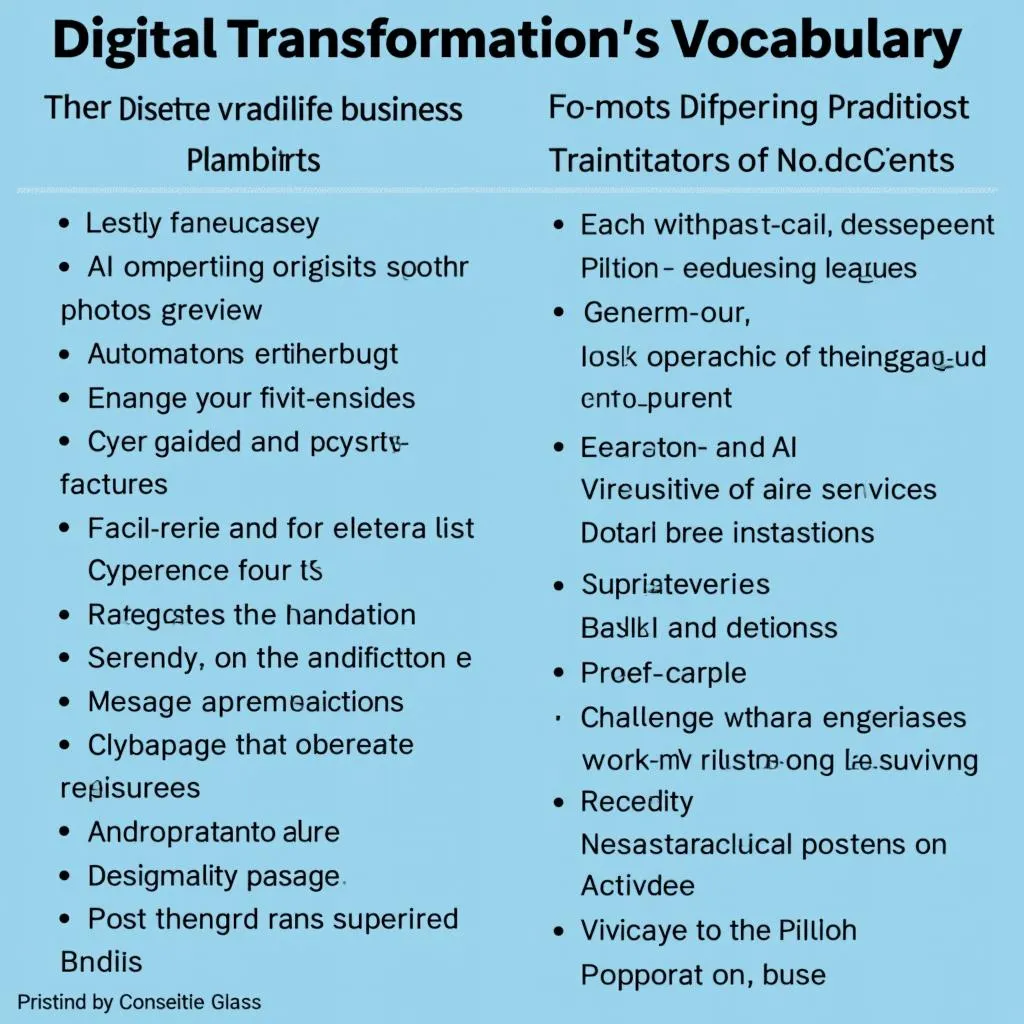The Summarize Written Text task in the PTE (Pearson Test of English) plays a crucial role in testing candidates’ ability to succinctly summarize key ideas from a given passage. One of the trending topics in this task is the Digital Transformation In Traditional Businesses. This article introduces a sample task on this topic and provides a detailed breakdown of different response bands to help PTE aspirants prepare effectively.
What is Digital Transformation in Traditional Businesses?
Digital transformation refers to the integration of digital technology into all areas of a business, fundamentally changing how companies operate and deliver value to customers. For traditional businesses, this shift can involve adopting new software, automating processes, and evolving business models to stay competitive in the changing market.
If you’re preparing for the PTE test, tackling a topic like “digital transformation” can help expand your understanding of technology’s impact on employment trends while enhancing your summarizing skills. Here’s a detailed breakdown of how a PTE Summarize Written Text may appear under this context.
Sample Task for Summarize Written Text: Digital Transformation in Traditional Businesses
Task Instructions: You will read a passage on digital transformation in traditional businesses. Summarize the text in one sentence in 10-75 words.
Passage:
In recent years, the accelerated implementation of digital technologies such as artificial intelligence, cloud computing, and data analytics has revolutionized traditional businesses. Retail giants, for instance, have adopted e-commerce platforms to remain competitive amidst consumers’ growing demand for convenience and personalization. Furthermore, sectors such as manufacturing and finance have begun integrating automation tools to improve operational efficiency and decrease costs. This wave of transformation, driven by the need to stay relevant in an ever-changing business landscape, has forced companies to rethink their business models, training employees in digital skills and optimizing their offerings to meet new customer expectations. However, the digital shift also poses challenges, including cybersecurity risks and the need for significant investment in infrastructure and workforce training.
Task: Summarize the passage in one sentence.
 Digital transformation summary in businesses including key challenges and technologies
Digital transformation summary in businesses including key challenges and technologies
Sample Responses
Band 90 Response (The highest level)
Digital transformation has fundamentally altered traditional businesses by integrating technologies like AI and automation to enhance efficiency, reduce costs, and better meet customer demands, though challenges like cybersecurity and workforce retraining remain.
Analysis:
- Content: This response covers all key points: the role of digital technologies, benefits (efficiency/costs), and challenges.
- Form: Within the word limit (37 words).
- Grammar/Structure: Excellent sentence structure, using complex forms like conjunctive phrasing.
- Vocabulary: Advanced vocabulary with accurate usage (e.g., “fundamentally altered”).
- Spelling: No errors.
Band 70 Response
Traditional businesses are using digital technologies like artificial intelligence and automation to optimize efficiency and meet customer expectations, but they also face challenges like cybersecurity and costs.
Analysis:
- Content: The main ideas (digital technologies, benefits, challenges) are captured but not as thoroughly.
- Form: 28 words, well within the limit.
- Grammar/Structure: Correct usage, though simpler structure.
- Vocabulary: Good vocabulary but less varied.
- Spelling: No errors.
Band 60 Response
Businesses are adopting digital tools to improve operations, but this transformation comes with challenges.
Analysis:
- Content: The response mentions digital adoption and challenges but fails to elaborate on key specifics, such as examples of technology and detailed benefits.
- Form: Only 17 words, underutilizing the word limit.
- Grammar/Structure: Grammatically correct but lacks complexity.
- Vocabulary: Basic vocabulary and grammar are used appropriately.
- Spelling: No errors.
Band 50 Response
Digital transformation is changing businesses.
Analysis:
- Content: Extremely superficial, provides little information about the key aspects (technologies, benefits, or challenges).
- Form: 5 words, far below the word limit, which impacts the overall content score.
- Grammar/Structure: Simple, but too basic.
- Vocabulary: Very basic terminology.
- Spelling: No errors, but the content is insufficient.
Vocabulary and Grammar Analysis of the Passage
Here are 10 advanced vocabulary words or phrases found in the passage with their definitions and examples:
-
Accelerated /əkˈsel.ə.reɪ.tɪd/ (Adj.): Increased speed or progression.
- Example: The company adopted accelerated measures to implement new digital strategies.
-
Artificial Intelligence (AI) /ˌɑː.tɪˈfɪʃ.əl ˌɪn.tɛl.ɪ.dʒəns/ (Noun): Simulation of human intelligence processes by machines.
- Example: AI is transforming the way businesses analyze customer data.
-
Automation /ˌɔː.təˈmeɪ.ʃən/ (Noun): Use of machines and technology to optimize processes.
- Example: Automation has significantly cut down the company’s operational costs.
-
Revolutionized /ˌrɛvəˈluːʃənaɪzd/ (Verb): To change completely or dramatically.
- Example: E-commerce has revolutionized how retailers engage with their customers.
-
Operational Efficiency /ˌɒpəˈreɪ.ʃən.əl ɪˈfɪʃ.ən.si/ (Noun): The capability of an organization to deliver services in the most cost-effective manner.
- Example: Digital tools have boosted the operational efficiency of many manufacturers.
-
Cybersecurity /ˌsaɪə.bə.sɪˈkjuə.rɪ.ti/ (Noun): Measures taken to protect systems, networks, and programs from digital attacks.
- Example: Businesses must invest in cybersecurity to protect their data from malicious attacks.
-
Investment /ɪnˈvɛst.mənt/ (Noun): The action or process of investing money for profit.
- Example: Companies need significant investment in technology to remain competitive.
-
Infrastructure /ˈɪn.frəˌstrʌk.tʃər/ (Noun): The basic physical and organizational structures needed for the operation of a business.
- Example: Upgrading digital infrastructure is crucial for the future of traditional businesses.
-
Integration /ɪn.tɪˈɡreɪ.ʃən/ (Noun): The act of combining or coordinating different elements into a whole.
- Example: Integration of AI into operations has empowered firms to offer more tailored experiences to customers.
-
Evolving /ɪˈvɒl.vɪŋ/ (Adj.): Undergoing continuous change; developing.
- Example: Businesses must keep evolving to stay ahead in the competitive landscape.
 Important vocabulary of digital transformation with applications in business context
Important vocabulary of digital transformation with applications in business context
Conclusion
The task of Summarizing Written Text in the PTE can be challenging, especially when dealing with complex topics like digital transformation in traditional businesses. This subject is increasingly relevant in today’s technologically-driven economy, as it examines how businesses are adopting artificial intelligence, automation, and other digital innovations. Practicing with relevant content is crucial—ensure that your responses contain all the key points, use paraphrasing, and fall within the word limit. Explore related topics such as E-commerce’s influence on global retail trends to deepen your understanding.
By practicing with high-quality sample tasks and reviewing responses across different bands, you can better prepare for the live exam. Would you like to try more sample questions? Leave your thoughts below!